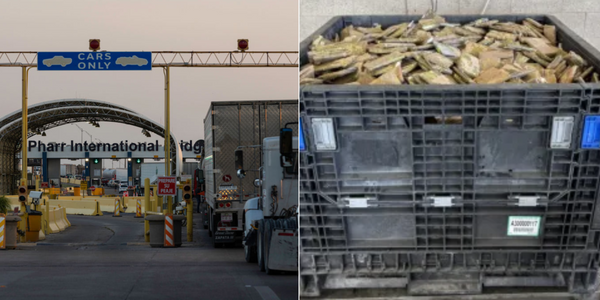
Andrea Simmons had never touched drugs before one use of ice led to an addiction. A new report suggests experiences like hers will remain common in regional areas, where consumption of crystal methamphetamine is still worryingly high.
“I needed it like I needed air,” Gold Coast resident Simmons says.
“Ice stole from me and I couldn’t see that.”
As a result she had to sell her house, car, and everything she owned.
“I lost control of my life, I lost everything including myself,” she says.
A near-death experience while on the drug led Simmons out of the “tunnel” she found herself in.
Even 10 years after her last use, she says “the damage that you do is lifelong.”
Simmons lives with severe heart, kidney and memory problems and says her addiction affected her children.
She says she feels “blessed” to be out of that world, as people using with her have ended up in prison, suffering severe mental health issues or, in some cases, dead.
Regional harms
According to the latest report from the Australian Criminal Intelligence Commission’s (ACIC) Wastewater Drug Monitoring Program released this week, people living in regional areas are more likely to experience the harms related to substance use.
Using wastewater data collected by the Universities of Queensland and South Australia across 58 sites nationally – covering over half the population – the report seeks to understand local drug markets across all capitals and a range of regional cities and towns up to August 2021.
It draws on five years of data collected since the program began, and found consumption of most drugs has generally been higher per capita in regional Australia.
The exception is in cocaine and heroin use, where consumption is higher in the cities, and the report notes these two drugs are exclusively imported, without any domestic production.
Drugs of concern
Mark Powell, operations manager of Western Region Alcohol & Drug Centre in Victoria, says availability is often the most important determinant of what drugs people use.
He says people in regional areas are able to make and produce methamphetamine because it can be produced in backyard labs, which is also dangerous to health.
The report found the consumption of nicotine and alcohol far exceeded that of all other substances monitored nationally in the reporting period of August to October 2021.
Of the illicit drugs, meth was the most consumed over the five-year study (8,838kg), followed by cocaine (4,711kg), MDMA (1,231kg) and heroin (984kg).

Regional consumption of methamphetamine, along with alcohol, nicotine, MDMA, oxycodone, fentanyl and cannabis, exceeded capital city consumption per capita.
Michelle Campbell, the clinical services manager for Lives Lived Well in regional NSW, says alcohol use accounts for 35% of services offered, meth 30% and cannabis 15%.
Powell identifies the same drugs as “the top three drugs of concern” at his service in Western Victoria.
Shane Neilson, principal adviser for drugs at ACIC, says the data shows there was a record high regional consumption of methamphetamine in April 2020, soon after national Covid restrictions were introduced, but that up to August 2021 there had been a tangible decrease.
Neilson says the purpose of the data was to enable ACIC to engage more closely with the relevant response agencies, such as law enforcement and health.
However, he says there is often less access to drug-related services in regional areas.
Reduced treatment options
Professor Jacqueline Bowden, the director of the National Centre for Education and Training on Addiction, says there are reduced treatment options in regional areas as most of the alcohol and other drug workforce is based in metropolitan areas.
Powell agrees, saying people in regional areas must travel further for treatment without access to public transport, and this in itself becomes a factor contributing to higher use.
“If people have easy access to help, they’re more likely to access help,” he says.
Powell also says the lack of access to mental health services and huge waitlists for those services available adds to the problem.
“A lot of people who present with substance use issues have significant histories of trauma and mental health issues,” he says.
According to Powell, both those needs should be addressed but “to get psychological help is really hard so that compounds and can add to the reasons why people might need to use substances just to cope, just to survive.”
At Western Region Alcohol & Drug Centre, Powell says people come to the service who have suffered child abuse growing up, so too victims of family violence, victims of sexual assault, as well as veterans and people who have worked in emergency services suffering trauma.
Bowden says “all of this data is compounded by the very regional and remote Aboriginal and Torres Strait Islander communities where we have massive issues of social exclusion, marginalisation, discrimination, cumulative trauma that then increases alcohol and other drug use behaviours.”

Solutions
In recovery from her addiction, Simmons went on to start Australian Anti-Ice Campaign, and believes education is key.
The campaign travels around the country to raise awareness, especially working in remote areas of Australia which don’t have a lot of drug services.
However, when it comes to those already taking drugs, Bowden says there are still many barriers, including the harms that come from criminalisation.
Bowden says many fear getting help will adversely affect them and their family.
“People often won’t come to treatment because they’re worried about owning up to dependence, they think they may lose their kids as a result,” she says.
Bowden says reducing the stigma and treating the problem as a health issue is essential.
According to Powell, the stigma is especially strong in small communities where everybody knows one another, as there’s a greater fear of judgement.
“What concerns me the most is I think people fear coming to get help early enough,” he says.
Bowden says recruitment issues need to be addressed as people working in drug treatment mostly have short-term contracts, which makes it harder to attract and maintain the workforce, especially in rural and regional areas.
She says other solutions exist, including up-skilling generalists who are already in regional and rural areas, as well as more use of telehealth.
Bowden says more resources also need to be extended to help families as “it doesn’t just affect individuals, it affects everyone around the individual.”
Campbell agrees that in smaller towns an overdose can affect the whole community. “Sometimes whole communities will shut down. There’s a lot of connection,” she says.







